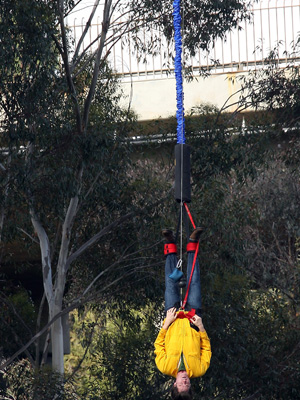 This must be what bungee jumping is like. Way down, a little up, down more, up less. The Dow 30 on Tuesday jumped 485 points, a day after diving 777 points.
This must be what bungee jumping is like. Way down, a little up, down more, up less. The Dow 30 on Tuesday jumped 485 points, a day after diving 777 points.
When the “financial meltdown” became public last Monday, the market plunged 540 points in the first two days of trading, then ended the week down only a couple hundred points.
Is it really worth getting all hot-and-bothered — or giddy — on a day-to-day basis?
On the first day of trading after September 11, the Dow dropped 684.81 points (at the time only the 14th worst decline ever). It went on to lose a total of 1,369 points that week, and got half of it back the next week. Within two months, the Dow was back to its previous 9/11 levels, and then some. All that worrying that it was the end of the world, and it wasn’t even the end of the quarter.
After 9/11, the biggest one-day drop was February 27, 2007, a day when the Taliban tried to assassinate Dick Cheney. The Dow dropped 416 points. It snapped back 52 points the next day. It took a little over a month to return to the previous levels.
Here are the other big point losses
April 14, 2000 -617.78 . It went up 276 points the next day and blasted back to its previous level within 6 days.
October 27, 1997 -554.26. It regained 337 points the next day, and was back to its old self two weeks later.
August 31, 1998 -554.26. The market regained almost 300 points a day later, and reached its previous level two weeks later.
October 19, 1987 -508. It regained 288 points over the next two days, but it took 13 months to return to the level the market was at.
